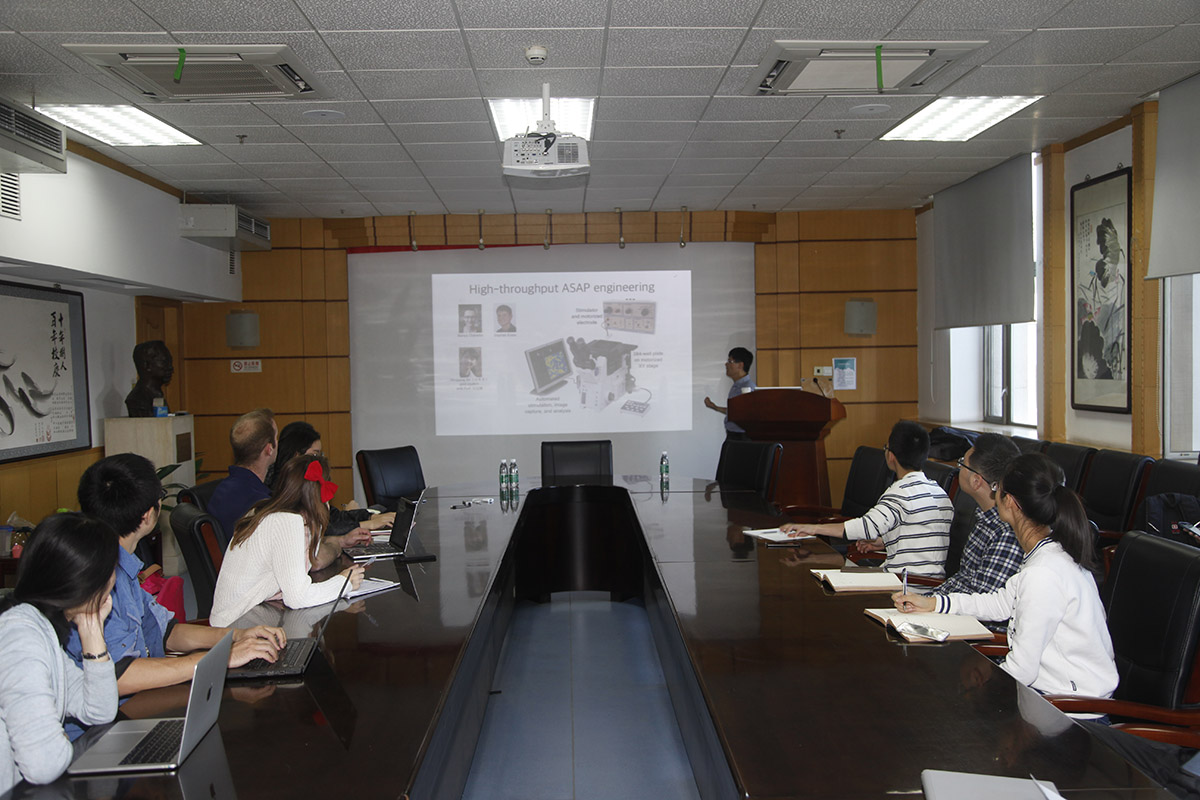
Introduction
Michael Z. Lin received an A.B. summa cum laude in Biochemistry from Harvard, an M.D. from UCLA, and a Ph.D. from Harvard Medical School. After training in biochemistry and neurobiology as a PhD student with Michael Greenberg at Harvard Medical School, Dr. Lin performed postdoctoral research in fluorescent protein engineering with Chemistry Nobel Laureate Roger Y. Tsien at UCSD. Dr. Lin is a recipient of a Burroughs Wellcome Career Award for Medical Scientists, a Rita Allen Scholar Award, a Damon Runyon-Rachleff Innovation Award, and a NIH Pioneer Award.
Abstract
I will discuss efforts in my lab to engineer fluorescent proteins into optogenetic tools for both visualizing and manipulating neuronal function. In one effort, we have developed fast voltage indicators named ASAPs by linking GFP fluorescence to voltage domain movements. The latest variant, ASAP3, reports single action potentials in neurons in acute brain slices and awake behaving mice with up to 35% fluorescence changes under two-photon illumination. In another effort, we have engineered fluorescent protein domains to undergo dissociation and association in response to two different wavelengths of light, then used these to create single-chain photoswitchable signal transduction molecules. We have found that photoswitchable GEFs and kinases can be used to enhance spine formation and maturation, and study developmental requirements for kinases in vivo.